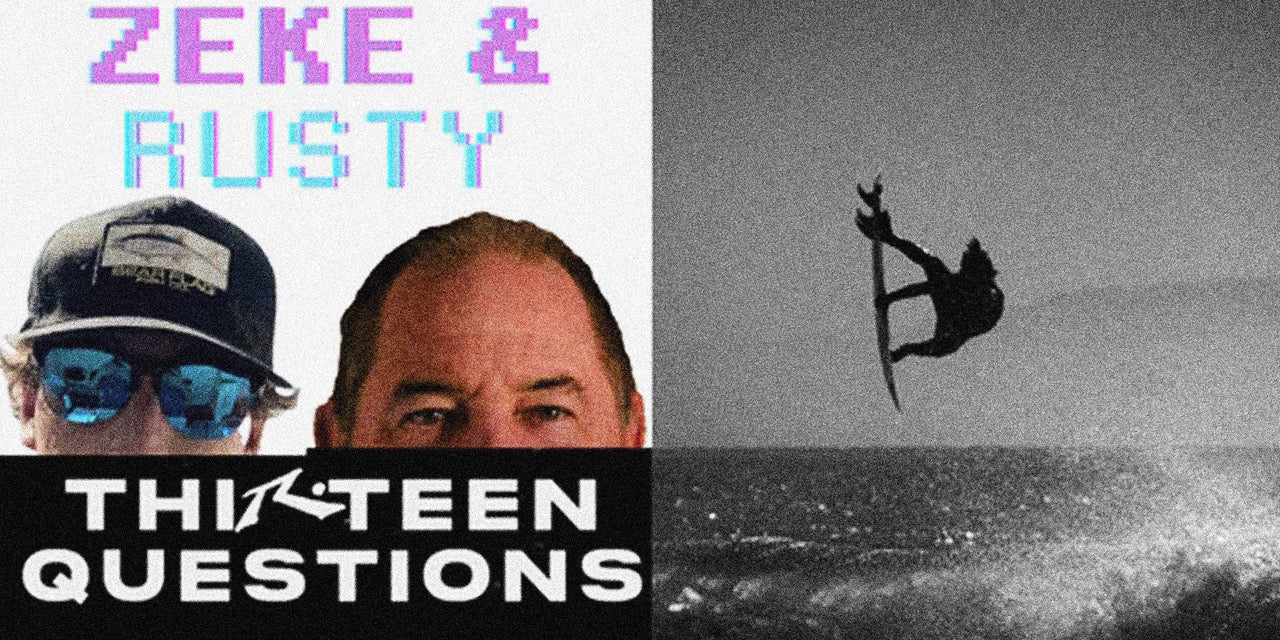Choosing the right dimensions is an important part of ordering a custom board. Here we share some advice on what to consider, as well as the meaning of the different measurements. We want to help you design the best board for yourself, so take a look at these important factors below.

A Quick Breakdown
Stock dimensions are pretty basic, and there are countless things that will affect the way your board rides. When it comes to dimensions, we recommend focusing on 3 numbers:- Length
- Width
- Thickness or volume

Length
Let's first consider length.
Length is straightforward. For most models, our shapers go by whole inches, since no one feels a half-inch difference in length (say, 0.5 over 62 inches). On some of the bigger boards we may list every other inch in length.

Width
The second number is the width.
As a board changes length, we need to adjust the width to keep the same proportions. For every inch in length, the width has to be adjusted by 0.125 or 1/8 of an inch. During the cutting process, the machine has a variance of 3% to 5%. Since each shaper has a different approach for the finishing process, there is a variance of at least 5%. So, don’t obsess over a slight variance in width, thickness, and especially volume.
For example, on width:
Round it up or down to a hundredth of an inch.
- A 6’0 might be 19' 3/8 = 19.375. So, the list number is 19.37.
- 6’1 is 19.5
- 6’2 is 19.63
- And so on…
Quite often, people request dimensions in the thousandths of an inch. However, in reality, no one can feel 18.71 vs 18.75 or 20.01 vs 20.0.
Example of a correct setup:
Miso Stock Dims for a 6’0.
- 6’0 x 20.0 x 2.43 x 33.0
 Thickness & Volume
Thickness & Volume
Thickness and volume are intertwined.
There is some room for adjustment when we change the thickness to hit a particular volume or the other way around. When someone orders a board, they must specify which they prefer: thickness or volume. While we have a little latitude, we can’t vary too much; otherwise, the design will start to distort.
As we adjust thickness according to length, theoretically it’s a percentage. The thickness adjusts to keep the liter on a consistent scale. For boards under approximately 5’8, the volume changes a little less than a liter. In the 5’9 to 6’2 range, they change usually about a liter. When boards reach over 6’2, the volume starts to creep up over a liter with each inch of increase.
These are approximate numbers, since every shaper shapes differently.
As I've mentioned, when it comes to volume you can’t feel a half liter. When their volume is 25 liters, a half-liter is 2%. 50 liters? 1%. Maybe just a few of the very best, lighter pros could feel the difference.
Your body weight changes throughout the day at a percentage greater than the half liter you are worrying about. For someone who weighs 165 lbs, their weight fluctuates 3-4% on average (5 to 7 lbs).
A surfer’s ability has a lot to do with the volume they should be considering. The bigger the board, the less noticeable is a difference in volume. This is especially true if the surfer is relatively inexperienced. In fact, erring on the plus side is a good thing.

Template
Boards are designed to have certain riding characteristics. Length, width, rocker, bottom, and the template all contribute. You don't want to order a board designed as a round tail and then change the tail to a split tail.
At the end of the day, we are here to build you a board that best fits you and your riding style. Let's work on shaping your next board together.
From,
Your Trusted Shaper





